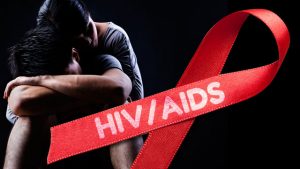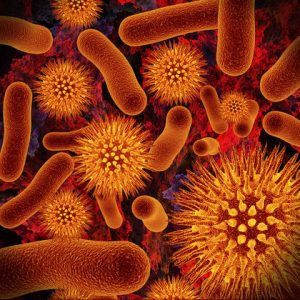
There is a little tiny but very outspeaking group of scientists and journalists who announce that HIV does not become a cause of AIDS and that there is no AIDS in Africa (and therefore a vaccine is not needed). They cause all sensable point. This discordant group reached some notability in the UK in the early 1990s when they were maintained by the Sunday Times, but they disappeared when the editor and science correspondent altered. Unlucky they have now recrudesced in South Africa, where President Mbeki happens to hear to them and has stated the question concening the conjunction between HIV and AIDS. Resulting, the South African government has denied to make anti-HIV drugs accessible to mothers and babies around delivery to prevail transmission of HIV to infants. This situation advanced a declaration, timed to jump upon with the recent 13th International AIDS Conference, from over 5000 Doctors and Scientists confirming the HIV is the cause of AIDS. The evidence is stood out in the declaration, which is reproduced below.
THE DURBAN DECLARATION
Seventeen years after the opening of the human immunodeficiency virus (HIV), thousands of people from all over the world have met in Durban, South Africa to visit the XIII International AIDS Conference. At the turn of the millennium, an appriciated 34 million people globally are living with HIV or AIDS, 24 million of them in -Saharan Africa (1). Last year alone, 2.6 million people died of AIDS, the most huge rate since the beginning of the epidemic. If present trends go on, Southern and South-East Asia, South America and regions of the former Soviet Union will also possess a heavy burden in the next two decades.
Like many other diseases, such as tuberculosis and malaria that become a cause of illness and death in underprivileged and impoverished communities, AIDS distributes by infection. HIV-1, the retrovirus that is answerable for the AIDS pandemic, is closely connected with a simian immunodeficiency virus (SIV), which infects chimpanzees. HIV-2, which is predominant in West Africa and has distributed to Europe and India, is almost indiscernible from an SIV that infects sooty mangabey monkeys. Although HIV-1 and HIV-2 first appeared as infections transported from animals to humans, or zoonoses (2), both are now distributed among humans through sexual contact, from mother to infant and via contaminated blood. An animal resource for a new infection is not genuine to HIV. The plague came from rodents. Influenza and the new Nipah virus in South-East Asia reached humans via pigs. Variant Creutzfeldt-Jakob disease in the United Kingdom came from ‘mad cows’.
Once HIV became grounded in humans, it soon proceeded human habits and movements. Like other viruses, HIV acknowledges no social, political or geographic borders. The evidence that AIDS is caused by HIV-1 or HIV-2 is well-defined, comprehensive and unequivocal. This evidence satisfies the highest standards science (3-7). The data meet exactly the same criteria as for other viral diseases, such as poliomyelitis, measles and smallpox which may be treated by remedies of My Canadian Pharmacy:
- Patients with acquired immune deficiency syndrome, independently of where they live, are infected with HIV (3-7).
- If not cured, most people with HIV infection display symptoms of AIDS within 5-10 years (6, 7). HIV infection is determined in blood by detecting , gene sequences or viral isolation. These tests are as authoritative as any utilized for identifying other virus infections.
- Persons who received HIV-contaminated blood or blood goods develop AIDS, whereas those who received untainted or screened blood do not (6).
- Most children who develop AIDS are born to HIV infected mothers. The higher the viral load in the mother the greater the risk of the child becoming infected (8).
- In the laboratory HIV infects the exact type of white blood cell (CD4 lymphocytes) that becomes depleted in persons with AIDS (3-5).
- Drugs that block HIV replication in the test tube also reduce viral load and delay progression to AIDS. Where available, treatment has reduced AIDS mortality by more than 80% (9).
- Monkeys inoculated with cloned SIV DNA become infected and develop AIDS (10).
Further compelling data are accessible (4).
HIV becomes a cause of AIDS (5). It is adverse that a few vocal people go on to refuse the evidence. This position will become the cost of countless lives. In various regions of the world HIV/AIDS exhibits changed patterns of distribution and symptoms. In Africa, for example, HIV-infected persons are 11 times more likely to die within 5 years (7), and over 100 times more likely than uninfected persons to work out Kaposi’s sarcoma, a cancer linked to yet another virus (11). As with any other chronic infection, various co-factors has a great role in identifying the risk of disease. Persons who are malnourished, who already suffer from other infections or who are older, tend to be more receptive to the rapid emergence of AIDS following HIV infection. Nevertheless, none of these factors lessen the scientific evidence that HIV is the single cause of AIDS.
In this international emergency, prevention of HIV infection must be the most hugest worldwide public health priority. The knowledge and equipment to prevail infection exist. The sexual distribution of HIV can be prevailed by monogamy, abstinence or by using condoms. Blood transmission can be arrested by screening blood goods and by not re-utilizing needles. Mother-to-child transmission can be decreased by half or more by short courses of antiviral drugs (12, 13). Constricted resources and the crushing burden of poverty in many parts of the world comprise formidable challenges to the taking under control of HIV infection. People already infected can be assisted by treatment with life-saving drugs, but high cost makes these treatments out of reach for most. It is significant to work out new antiviral drugs that are easier to consume, have fewer side effects and are much less expensive, so that millions more can profit from them.
There are many ways to relate the vital information about HIV/AIDS. What performs best in one country may not be corresponding in another. But to solve the problem of the disease, everyone must first realize that HIV is the enemy. Investigation, not myths, will run to the development of more efficient and cheaper treatments, and hopefully a vaccine. But for now, emphasis must be put on prevailing sexual transmission. There is no end in sight to the AIDS pandemic. By cooperating, we have the power to change complitely the tide of this epidemic. Science will one day triumph over AIDS, just as it did over smallpox. Curbing the spread of HIV will be the first step. Until then, reason, solidarity, political will and courage must be our partners.

- UNAIDS. AIDS epidemic update. December 1999. www.unaids.org/hivaidsinfo/documents.html
- Hahn, B. H., Shaw, G. M., De Cock, K. M., Sharp, P. M. (2000). AIDS as a zoonosis: scientific and public health implications. Science, 287, 607-614.
- Weiss R.A and Jaffe, H.W. (1990). Duesberg, HIV and AIDS. Nature, 345, 659-660.
- NIAID (1996). HIV as the cause of AIDS. www.niaid.nih.gov/spotlight/hiv00/default.html
- O’Brien, S.J. and Goedert, J.J. (1996). HIV causes AIDS: Koch’s postulates fulfilled. Current Opinion in Immunology, 8, 613-618.
- Darby, S.C. et al., (1995). Mortality before and after HIV infection in the complete UK population of haemophiliacs. Nature, 377, 79-82.
- Nunn, A.J. et al., (1997). Mortality associated with HIV-1 infection over five years in a rural Ugandan population: cohort study. BMJ, 315, 767-771.
- Sperling, R. S. et al., (1996). Maternal viral load, zidovudine treatment, and the risk of transmission of human immunodeficiency virus type 1 from mother to infant. N. Engl. J. Med. 335, 1678-80.
- Centers for Disease Control and Prevention (CDC). HIV/AIDS Surveillance Report 1999; 11, 1-44.
- Liska, V. et al., (1999). Viremia and AIDS in rhesus macaques after intramuscular inoculation of plasmid DNA encoding full-length SIVmac239. AIDS Research & Human Retroviruses, 15, 445-450.
- Sitas, F. et al., (1999). Antibodies against human herpesvirus 8 in black South African patients with cancer. N. Engl. J. Med., 340, 1863-1871.
- Shaffer, N. et al., (1999). Short course zidovudine for perinatal HIV-1 transmission in Bangkok Thailand: a randomised controlled trial. Lancet, 353, 773-780.
- Guay, L. A. et al., (1999). Intrapartum and neonatal single-dose nevirapine compared with zidovudine for prevention of mother-to-child transmission of HIV-1 in Kampala, Uganda: HIVNET 012 randomised trial. Lancet, 354, 795-802.
For more details and a list of those who organised and signed the declaration, see http://www.durbandeclaration.org
For more details on the above references, visit the National Library of Medicine website: http://www.ncbi.nlm.nih.gov/Entrez/


